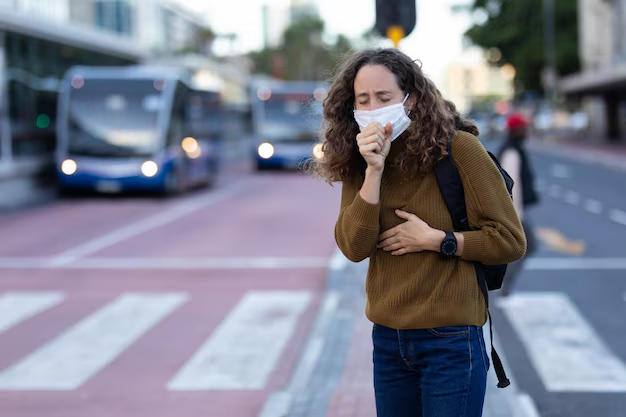Understanding Mumps: How It Spreads and What You Need to Know
We all remember our childhood vaccinations and the stories told of illnesses that once ran rampant. Among them is mumps, a viral infection often sidelined in discussions today, yet quite relevant. The question remains: How is the mumps virus actually transmitted? Exploring its transmission offers insight not just into mumps itself, but also into the workings of viral infections as a whole.
What Exactly is Mumps?
Mumps is a contagious viral infection primarily affecting the salivary glands located near your ears, causing the characteristic puffy cheeks and swollen jaw. While mumps might seem like something out of yesteryear, it still poses a public health challenge.
A Brief History and Current Perspective
Historically, mumps was a ubiquitous childhood ailment until the widespread introduction of the MMR (measles, mumps, and rubella) vaccine. Thanks to vaccination efforts, cases plummeted. However, mumps outbreaks have not entirely disappeared, often cropping up in communities with low vaccination rates or among people in close-quarters living situations, such as colleges.
The Transmission Pathway of Mumps
Understanding the transmission of mumps helps not only in personal health management but also in contributing to public health safety.
How Mumps Spreads
Person-to-Person Contact: Mumps is primarily spread through respiratory droplets. When an infected person coughs, sneezes, or talks, tiny droplets containing the virus are released into the air. If these droplets are inhaled by someone susceptible, the virus can take root.
Direct Contact: Sharing utensils, drinks, or kissing can transmit the virus. The mumps virus thrives in saliva, so activities that involve saliva exchange are especially risky.
Surface Transmission: Mumps can be transmitted by touching surfaces contaminated with the virus and then touching the mouth or nose. This makes disinfecting surfaces and hand hygiene key in prevention.
Why Close Contact Matters
Places with dense populations, like classrooms, dorms, or sporting events, can act as incubators for viral spread. This setting explains why outbreaks often affect university campuses or military barracks.
Asymptomatic Transmission
One of the trickiest parts of managing mumps transmission is asymptomatic carriers—those who show no symptoms yet can still spread the virus unknowingly. Up to 20% of infected individuals may be asymptomatic, making vigilance critical.
Recognizing the Symptoms
Spotting mumps can help curb its spread. Classic symptoms typically appear 2 to 3 weeks after exposure and include:
- Swollen, painful salivary glands
- Fever
- Headache
- Muscle aches
- Fatigue and weakness
- Loss of appetite
While the swollen glands are most indicative of mumps, the other symptoms reiterate how it could easily be mistaken for a less serious illness, hence the potential for wider exposure.
The Role of Vaccination
The MMR vaccine is the frontline defense against mumps, dramatically reducing its incidence.
Vaccination Benefits
- Reduced Illness Severity: Even if vaccinated individuals contract mumps, the severity and duration are typically reduced.
- Herd Immunity: Widespread vaccination protects those who cannot be vaccinated, such as infants or immunocompromised individuals, by lowering overall transmission rates.
Addressing Vaccine Hesitancy
Vaccine hesitancy affects public health efforts. Community education focusing on the benefits and safety of vaccines is fundamental in ensuring continued protection against mumps and other vaccine-preventable diseases.
Challenges in Controlling Mumps
Despite vaccination, challenges persist. These include:
- Vaccine Coverage Gaps: In areas with lower vaccination rates, susceptibility increases.
- Viral Mutation: Like many viruses, the mumps virus can undergo genetic changes, potentially impacting vaccine effectiveness.
- International Travel: Mumps can easily cross borders, making international travel a vector for outbreaks.
Protecting Yourself and Your Community
While vaccination is paramount, other strategies are critical in preventing mumps transmission.
Hygiene and Sanitation
- Handwashing: Regular handwashing with soap effectively reduces viral transmission.
- Cough and Sneeze Etiquette: Encouraging covering coughs and sneezes with tissues or the elbow decreases droplet spread.
- Disinfecting Surfaces: Regular cleaning of frequently-touched surfaces minimizes contact transmission.
Isolation Precautions
If mumps is suspected, isolation is advised for at least five days after symptom onset to prevent spreading the virus to others.
Understanding Outbreaks: Case Studies
Looking at outbreak case studies offers further insights into mumps transmission dynamics.
Recent Outbreaks
- College Campuses: Outbreaks often highlight the need for maintaining vaccination records and prompt isolation protocols.
- Military and Athletic Teams: Close-quarters living necessitates strict adherence to hygiene practices and vaccination verification.
Looking to the Future
Ongoing research is integral in keeping mumps at bay. Improving vaccine formulations and understanding viral mechanisms remain priorities.
Building a Resilient Community
Community engagement and education can foster a more informed public more willing to support vaccination programs and other preventive measures.
The Importance of Global Surveillance
International data-sharing helps track mumps variants and outbreaks, crucial for timely preventive actions worldwide.
Takeaway Summary:
- 🦠 Transmission Routes: Mumps spreads through airborne droplets, direct contact, and contaminated surfaces.
- 💉 Vaccination is Key: The MMR vaccine significantly mitigates mumps spread and severity.
- 🚫 Prevention Methods: Emphasize hygiene, vaccination, and isolation for symptom management.
- 📚 Education Matters: Address vaccine hesitancy with informed community engagement.
- 🌍 Stay Informed: Global monitoring aids in managing potential outbreaks.
Understanding how mumps is transmitted and taking proactive measures to prevent its spread not only protects individuals but fortifies our collective health defenses.
